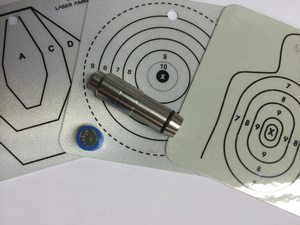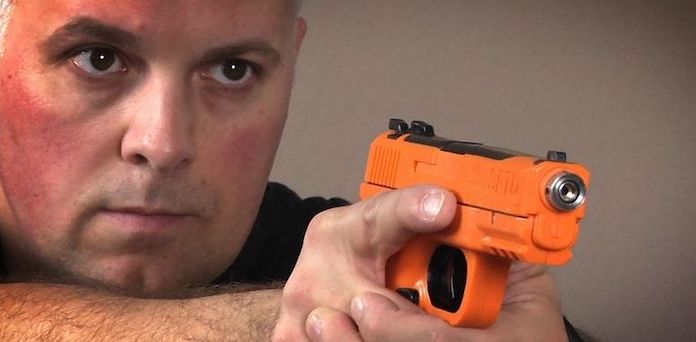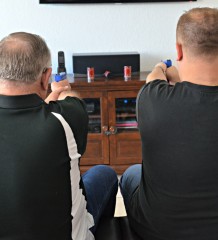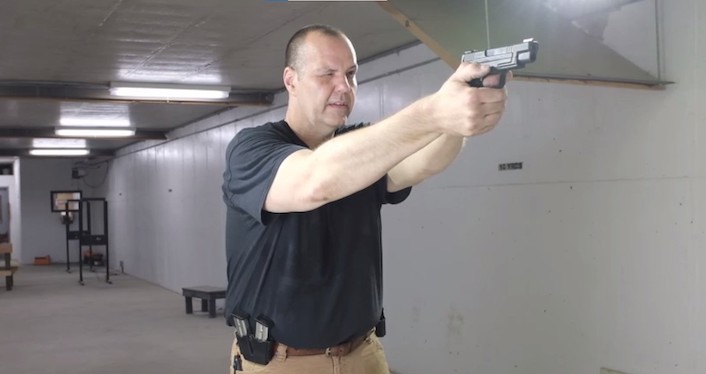
Dry fire training is an effective and inexpensive way to practice shooting. In its simplest form, dry firing is target practice without ammo. You do everything as you would at the range except punch holes through paper. Most experts agree that the main purpose of dry fire is to learn about your gun, examine your ability, and improve your technique before going live on the range.
“Dry practice … allows you to work on techniques and shooting skills off the range so that you can make the most of your live fire trigger time,” says Julie Golob, world champion handgun shooter and Smith & Wesson pro, in a video post about the subject. “Let’s face it, range time is precious.”
Kirsten Joy Weiss, a champion collegiate shooter and social media influencer, explains dry shooting is so effective because it eliminates the extreme sensory experience of firing a gun.
“Without recoil [or] the sound of the shot going off, all you hear is the click of the trigger as you take the shot,” she says. “This allows you to focus on your sight picture and your trigger press and see the foundation of your marksmanship technique.”
Another benefit of dry fire, which might be obvious to serious shooters, is all the money you save. “Ammunition is one of the biggest expenses of shooting and it adds up,” Weiss says, and adds that it’s not uncommon for her to shoot more than a thousand rounds in a single training session.
Prepare a Dry Fire Place

Before you begin dry fire training, you should first arrange a practice space. Find one that can be effective and safe because even though you’re not using live ammo, all four firearm safety rules still apply!
Find a Place to Dry Fire
“[Start by] making sure that you’ve found a good, safe place in your home such as a garage or somewhere you know that you will be pointing [your gun] in a safe direction,” says Krystal Dunn, a pro shooter for Federal Premium, in a video post.
Dunn, along with all shooting experts, stress that you double-check that your pistol, rifle or shotgun is unloaded before you start dry shooting. More often than not, instructors will also urge you to remove all live ammo from your pockets and gun pouches, and some even suggest you remove it from the room entirely.
Arrange Your Space Appropriately
Charlie McNeese, a rangemaster at the world famous Gunsite Academy, recommends that you mentally prepare for dry fire training as well. Therefore, you should arrange your practice space appropriately.
He suggests removing anything that might distract from training. “No radios, no TVs, no phones, nothing to distract us from what we’re trying to accomplish. And when we do things, we do things with a purpose in mind. Not to just waste time,” McNeese says in an interview.
Dry Fire Target Ready
Once you have a safe space, an unloaded gun, and a training plan, the last thing to do is to set up something to shoot at. Taping a target to the wall or simply using a sticky note will suffice. You just need something to aim at.
What Dry Firing is NOT
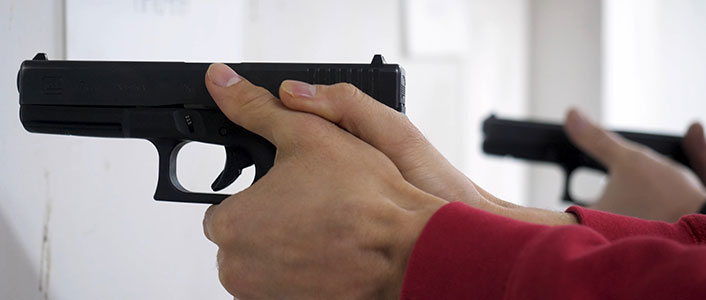
Dry firing is more than pointing a gun at the wall and snapping the trigger. Experienced shooting instructor Paul Markel explains that all too often, shooters (and even professional gun-handlers) treat dry firing like busy work and, as a result, end up developing poor technique.
“Thoughtless trigger snapping can lead to what many call ‘training scars’ or bad habits that actually detract from good marksmanship,” Markel says in his article on Officer.com.
“Each and every draw stroke or trigger press trains the neuromuscular impulses in your body,” Markel says as he stresses technique over speed. “Strive for a perfect draw stroke or perfect trigger press each time,” he adds.
A Dry, Dry Fire

Markel’s article reminds me of an expression you hear in tactical training: slow is fast and fast is slow. That means a smooth and proper application of technique is better than speed. Most shooting instructors recommend you start dry fire training with a steady, slow pull. Pulling the trigger slowly will reveal so much about the firearm. You’ll learn:
- How much pressure you need to apply to set off the gun.
- How much slack is in the trigger.
- When the trigger engages the firing mechanism (or hits the “wall”).
- How much the trigger “creeps” to the breaking point.
Following that same line of thought, most instructors will also recommend you control the trigger reset. During dry firing, this means keeping the trigger depressed when you recharge the gun. With a controlled reset, you’ll feel the springs loosen as you slowly ease the trigger forward. Then, you’ll hear and feel the trigger click. In short, this dry, dry run will help you understand the mechanics of your gun and basic trigger control.
How to Dry Fire
By now, you understand the basic idea of what dry firing is, so now we’ll discuss how to do it.
In general, dry fire training involves drawing, presenting, aiming, and shooting your gun, but more importantly it’s about analyzing and improving those things. So, what should you try to learn when you dry fire?
One Step at a Time

For a shooter like Dunn, focusing on individual steps is most efficient. “I’m going to work on just focusing on my target and getting a nice natural grip on my firearm,” she says, and adds, “You can also practice your draw, your press out to your target, good sight alignment, and a smooth, steady trigger pull.”
Move without Moving
However, Weiss says she mainly focuses on three things: smooth trigger press, moving without moving sight picture, and follow through, which she defines as “the act of staying on the gun and within your sight picture without moving even after the shot is released.”
What Weiss describes will lead to something called an after-shot assessment. After you pull the trigger, you should freeze and note where your sights are in relation to your target and then compare them to where you started, which should be center mass.
Finger Placement
Top Shot champ Chris Cheng emphasizes working on trigger finger placement. In an instructional video, Cheng explains too much finger on the trigger or too little will pull shots away from the bull’s eye. “Proper trigger finger placement is at that point where (your finger) is about one-third out from that first knuckle,” Cheng says.
After figuring out proper trigger finger placement, Cheng advises focusing on practicing a straight and smooth pull to the rear and then putting it all together.

Smooth Application
Golob agrees that the most useful skill you can acquire through dry shooting is trigger control, but she also encourages you to refine individual steps as you go through the motions from drawing to shooting.
“Skills that are especially helpful for new gun owners to work on in dry fire are learning how to manipulate the slide of your firearm and practicing safe muzzle direction, teaching yourself how to acquire a proper grip every time, getting comfortable with a stance that allows you to control recoil, [and] building confidence with how to line up the sights for accuracy and speed,” Golob says.
Will Dry Shooting Damage My Gun?
The short answer is… it depends on the gun.
Most modern firearms, including rifles, shotguns, and striker fired pistols, will be fine, but, according to the NRA, dry firing could damage rimfire firearms.
“Rimfire guns are particularly susceptible … because the firing pin must hit the rim of the cartridge in order to detonate it,” the NRA says, and explains if there’s no soft primer to strike, the firing pin will hit the hard steel chamber, which could damage the pin.
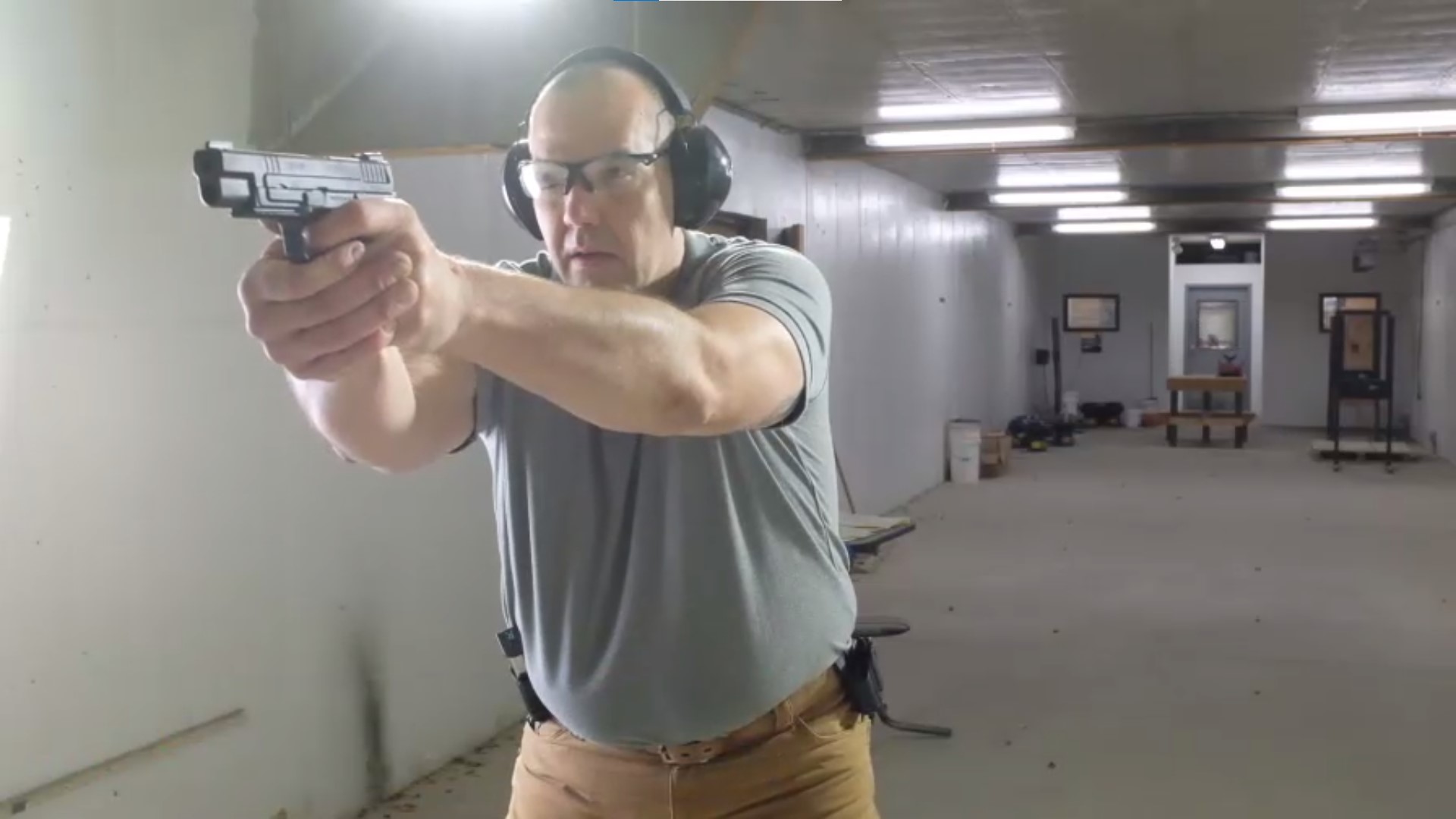
Additionally, older single-action revolvers, especially ones popular among cowboy action shooters, can also be damaged if they’re fired on an empty chamber. Therefore, it’s generally recommended to invest in snap caps. These inexpensive dummy rounds feature a soft spot in the primer to provide a cushion for the firing pin to strike.
Parting Shots
Some of the best shooters in the world dry fire. They aim their gun at their garage wall and do high reps in their basement or wherever they find themselves. They might even mix some dry fire in with their live fire just to keep things spicy. So, if you don’t have any ammo or just want to improve your overall shooting skills, start dry firing to enhance your technique. If you have other dry fire tips or tricks, share them in the comments below.
- Project ChildSafe: Distributing Gun Safety Locks Since 1999 - October 7, 2021
- Understanding Different Types Of Triggers & How They Work - August 24, 2021
- How To Draw A Pistol From A Holster Step-By-Step (Video) - August 24, 2021
Related Posts
« Best Types of Scopes for Different Shooting Activities Beginner’s Guide to Guns: 4 Top Tips for New Firearm Owners »


